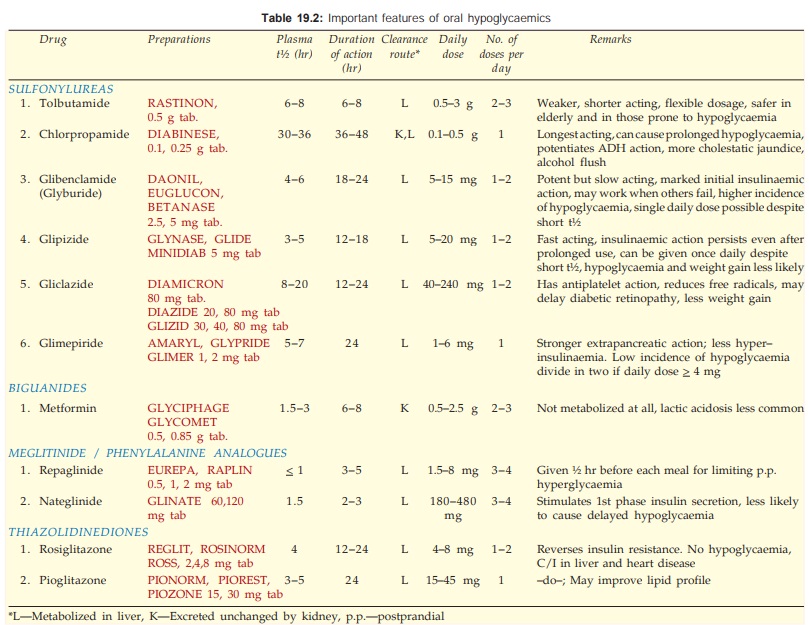Biguanides
| Home | | Pharmacology |Chapter: Essential pharmacology : Insulin, Oral Hypoglycaemic Drugs and Glucagon
Two biguanide antidiabetics, phenformin and metformin were introduced in the 1950s. Because of higher risk of lactic acidosis, phenformin was withdrawn in many countries and has been banned in India since 2003.
BIGUANIDES
Two biguanide antidiabetics, phenformin and metformin were introduced in the 1950s. Because of higher risk of lactic acidosis, phenformin was withdrawn in many countries and has been banned in India since 2003.
The generic formula of biguanides is:

They differ markedly from sulfonylureas: cause little or no hypoglycaemia in nondiabetic subjects, and even in diabetics episodes of hypoglycaemia due to metformin are rare. They do not stimulate pancreatic β cells. Metformin is reported to improve lipid profile as well in type 2 diabetics.
Mechanism Of Action
It is not clearly understood. Biguanides do not cause insulin release, but presence of some insulin is essential for their action. Explanations offered for their hypoglycaemic action are—
1) Suppress hepatic gluconeogenesis and glucose output from liver: the major action.
2) Enhance insulinmediated glucose disposal in muscle and fat. Though they do not alter translocation of GLUT4 (the major glucose transporter in skeletal muscle), they enhance GLUT1 transport from intracellular site to plasma membrane. The effect thus differs from that of insulin.
3) Retard intestinal absorption of glucose, other hexoses, amino acids and vit B12.
4) Interfere with mitochondrial respiratory chain—promote peripheral glucose utilization by enhancing anaerobic glycolysis. However, metformin binds less avidly to mitochondrial membrane.
Actions 3 and 4 appear to contribute little to the therapeutic effect.
Pharmacokinetics
The important features are given in Table 19.2. Clearance of metformin approximates g.f.r. It accumulates and increases the risk of lactic acidosis in renal failure.

Adverse Effects
Abdominal pain, anorexia, nausea, metallic taste, mild diarrhoea and tiredness are the frequent side effects. Metformin does not cause hypoglycaemia except in overdose.
Lactic acidosis Small increase in blood lactate occurs with metformin, but lactic acidosis is rare (<1 per 10,000 patient years) because it is poorly concentrated in hepatic cells. Alcohol ingestion can precipitate severe lactic acidosis.
Vit B12 deficiency due to interference with its absorption can occur with high dose of metformin.
In addition to general restrictions for use of oral hypoglycaemics (see below), biguanides are contraindicated in hypotensive states, cardiovascular, respiratory, hepatic and renal disease and in alcoholics because of increased risk of lactic acidosis.
Related Topics
